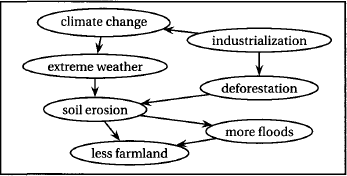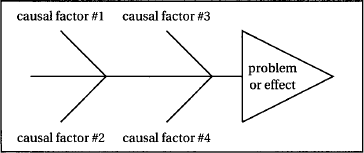CHAPTER 16
DIAGRAMS OF CAUSAL PROCESSES
Causal processes are often complicated. Here are some diagrams that can make them easier to understand. They are also useful in giving presentations.
16.1 CAUSAL NETWORKS

In a causal network diagram, nodes represent events and arrows link causes to effects. The diagram above shows the process of soil erosion. We can also use annotated arrows to provide more information about the causal links. For example, a positive sign [+] next to an arrow linking A to B indicates that A increases the probability of B. A negative sign [-] indicates that A decreases the probability of B. One might even assign numerical probabilities. With enough information, we can calculate the probabilities relating other events, and predict how the system respond to changes. This is known as a Bayesian network or Bayes net. But causal diagrams are not just for scientists. They are useful for showing causal interactions in many other areas. For example, a diagram might use arrows to link together different art movements to show how they have influenced each other.
16.2 FISHBONE DIAGRAMS
The diagram below shows the general structure of a fishbone diagram, so-called because of its shape:

These diagrams are also called cause and effect diagrams, and they were made popular ...

